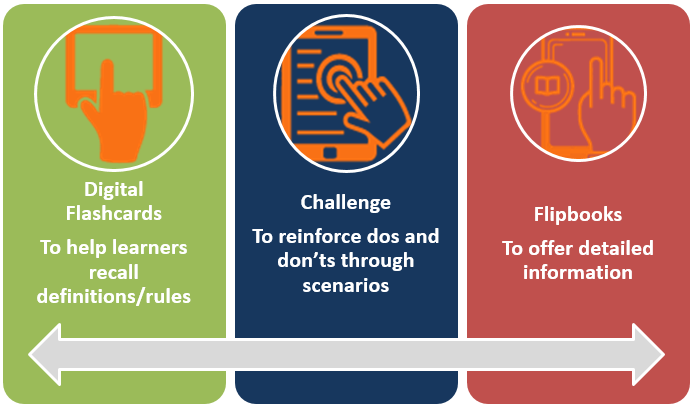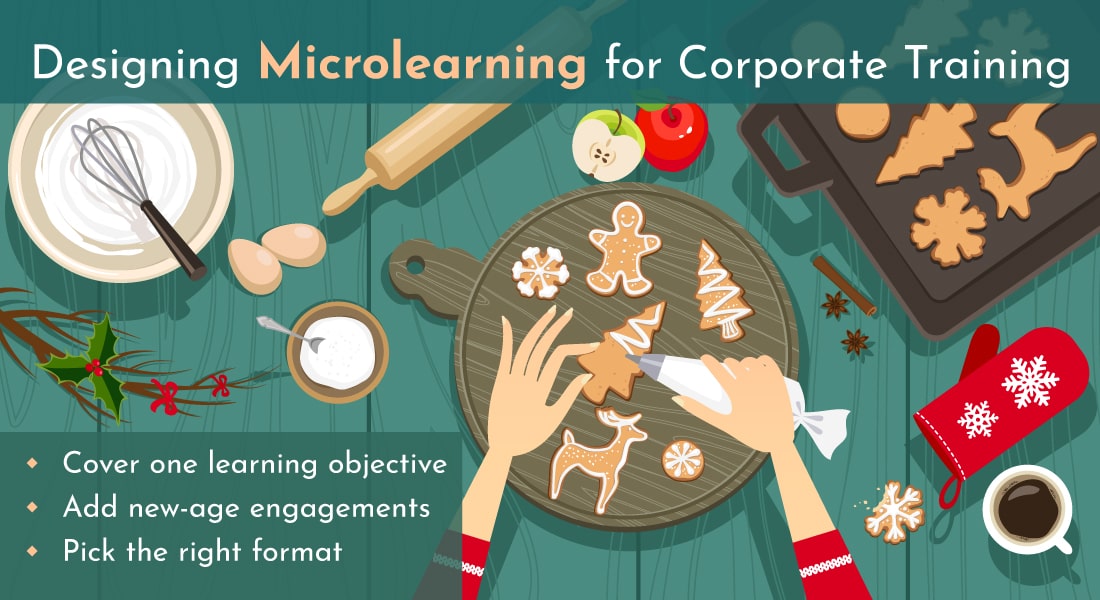How Can Microlearning Beat the Forgetting Curve?

How well are your employees able to recollect every bit of knowledge imparted in an online learning session? Perhaps very little, is it? In today’s highly competitive marketplace, employees find little time to focus on training. In addition to this, according to the forgetting curve, knowledge stored in the human brain is often lost over time if there is no attempt to retain it.
Ways to beat the forgetting curve with microlearning
- Offer spaced learning
- Provide just-in-time learning opportunities
- Use micro assessments
So when jobs involve tasks of high importance and the consequences of errors are high, it is important that we beat the forgetting curve and reinforce employee knowledge. Microlearning modules in the form of bite-sized nuggets will help you comprehensively reinforce employee knowledge on essential job tasks.
Let’s explore three popular ways of doing this.
Microlearning to Overcome the Forgetting Curve
1. Spaced Learning
According to the approach of spaced effect put forth by leading German psychologist Hermann Ebbinghaus, knowledge can be easily retained if it is divided into chunks and repeated over time.
And as per the Association for Talent Development (ATD), this approach of spacing learning over time has been proved to be an effective concept in multiple domains, including sales training and linguistics.
How Can I Apply This in Corporate Training?
Consider a compliance course on risk assessment and mitigation. Though critically important, compliance courses often end up being lengthy and boring. This results in learner disengagement, and an eventual loss of knowledge. In such scenarios, to minimize forgetting curve and help learners recall what they have learned, an engaging follow-up approach will be appropriate.
After the completion of an eLearning course on compliance training, the organization can use microlearning to reinforce the learned knowledge at regular intervals. A few days after the completion of the course, present the core concepts again.
However, repeating a course doesn’t mean presenting content in the same format as it was presented initially. Microlearning puts you at the advantage of presenting a concept in short bursts, spaced over time in a variety of formats. Employing different digital learning assets such as videos, simulations, scenarios, and infographics allow you to present content in multiple formats that are creative and engaging.
For example, you can use:
- eBooks to present the policies
- Infographics for dos and don’ts
- Scenarios-based assessments to test decision-making skills
Microlearning assets can be used for both knowledge and skill reinforcement. You can adjust the intervals between the repetitions depending on the course and learners. For example, if your learners are new hires, it’s appropriate to space learning over short time intervals.
Here are some other micro assets that can engage learners and offer them knowledge reinforcement.

2. Just-in-time Support
Beat the forgetting curve for important tasks or tasks that aren’t performed frequently using microlearning to offer just-in-time learning.
For example, after attending a classroom session on a lengthy process training, learners might have been able to demonstrate the knowledge gained, but in a couple of weeks they seem to forget what they have learned. Unfortunately, like a USB hard disk, human brains do not show a pop-up of ‘memory full’. There is a limit to which human brain can hold memory for a time period.
We can overcome the forgetting curve by offering learners just-in-time performance support in small chunks or bite-sized learning units.
By allowing learners to pull knowledge at their point of need, you transfer learning back to the workplace and help employees put into practice the knowledge they have acquired. Microlearning job-aids such as infographics, videos, eBooks, and PDF documents help learners accomplish a task by catering to their immediate job requirements.
For example, consider a mechanic from your manufacturing unit who has to debug errors in a new automotive engine, at a customer site. Here, a video that illustrates the required steps will help the mechanic take a quick glance and reinforce their knowledge, before he starts the task.
In a different context, imagine a learner forgets how to execute a specific software task or what a particular error code means. By providing a just-in-time learning solution such as a simulation-based video or an infographic that lists what each error code means, you can help learners accomplish their task instantly.
3. Micro Assessments
Compelling learners to review and testing the acquired knowledge at regular intervals will help beat the forgetting curve and embed knowledge into one’s memory. But how can you motivate learners to retrieve their acquired knowledge?
After a formal eLearning or ILT session, you can evaluate learners’ knowledge regularly through micro assessments. Online assessments in spaced intervals offer learners an opportunity to retrieve their knowledge from memory. And with microlearning, you are at the advantage of making these bite-sized assessments fun and stress-free.
Develop interesting assessments in mini formats such as games, scenarios, and simulations and upload them periodically on your organization’s LMS or send them directly to learners via email. Employees can instantly answer these micro assessments, reinforce their knowledge on important tasks, and stay updated.
The activities used in classroom training, for instance role plays and group interactions can be converted to scenarios or gamified assessments. These microlearning nuggets need not be deployed as formal training – sending them over email too will do. This improves learner engagement and provides learners with opportunities to apply their knowledge.
For example, say you want to reinforce your sales reps’ knowledge on your products. Get them to take periodic assessments in the form of a maze or a board game, instead of the standard Multiple-Choice Questions (MCQs) only at the end of the course. As learners retrieve and apply knowledge to answer questions, it gets reinforced.
Similarly, if you want to refresh the customer service skills of your employees, you could offer them scenario-based gamified assessment nuggets. This will help employees traverse through different customer relation experiences, overcome challenges, and achieve the learning objectives.
At the end of every micro assessment, provide diagnostic feedback to your employees. This is another effective way to reinforce their knowledge and offer them an opportunity to assess their own knowledge periodically.
Hope this blog gave you an idea of how microlearning tackles the forgetting curve of employees for job tasks of high importance. If you are interested in knowing more on how microlearning can support enhanced employee performance, check this eBook that deals with where microlearning fits into your overall learning strategy.





